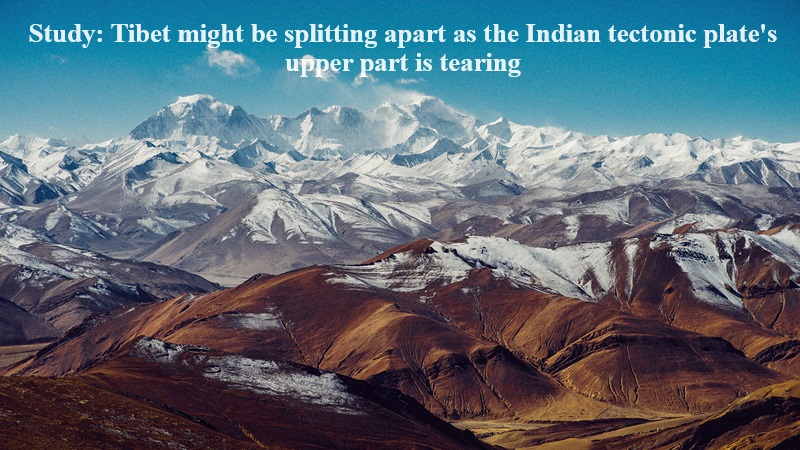
A recent study suggests that Tibet may be undergoing a process of fragmentation, driven by the tearing and warping of the upper part of the Indian tectonic plate due to constant collision. This revelation challenges previous understandings of the geology beneath the Himalayas, the world’s highest mountain range, as presented at the annual meeting of the American Geophysical Union.
The continuous collision between the Indian and Eurasian tectonic plates beneath the Himalayas has led to the ongoing growth of this iconic mountain range. When an oceanic and continental plate collide, the geological outcome is well-known to scientists. However, the situation becomes more complex when two continental plates collide, as they possess similar densities.
In cases where the oceanic plate is denser, it typically subducts under the lighter continental plate. Some geoscientists propose the idea of underplating, wherein one continental plate slides beneath the other without extensive subduction when two continental plates collide. On the contrary, others suggest that the inner sections of the Indian plate are subducting, while the upper parts are compressing against the bulk of Tibet.
The new research supports the notion that the Indian plate is indeed subducting. However, a distinctive aspect emerges during this process — the plate is bending and tearing, causing its upper half to peel away, resembling the lid being lifted off a tin can.
The researchers conducted an investigation by analyzing earthquake waves propagating through the crust at the collision site of the two plates. Utilizing these waves, they generated images revealing fractures in the Indian plate’s crust. The findings indicate that while certain regions of the Indian plate extend to a depth of 124 miles (200 kilometers), in other areas, it is only 62 miles (100 kilometers) deep, suggesting a peeling away of portions of the Indian plate. This newfound understanding of the intricate geological processes beneath the Himalayas highlights the evolving nature of scientific knowledge in this field.

Post Your Comments